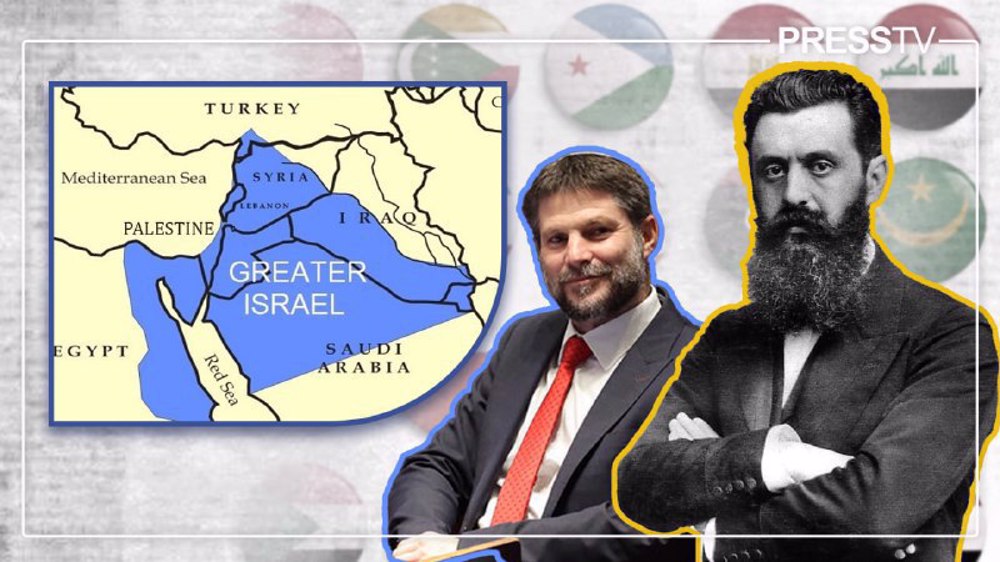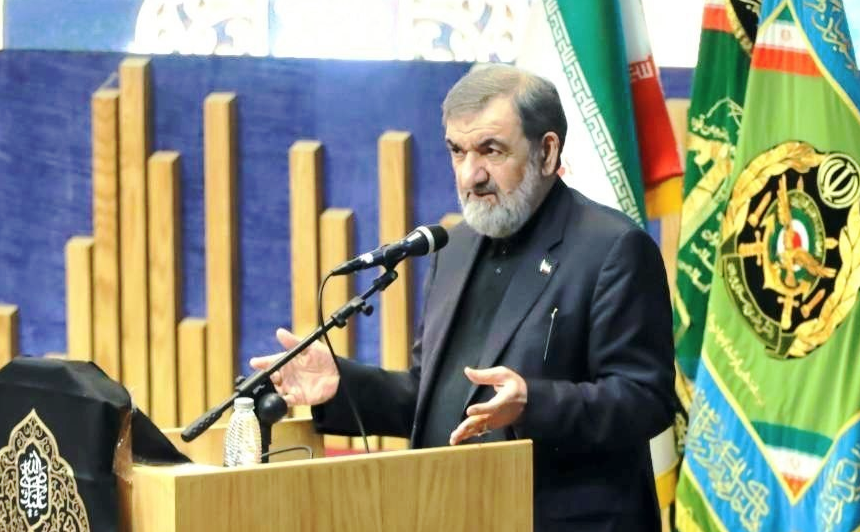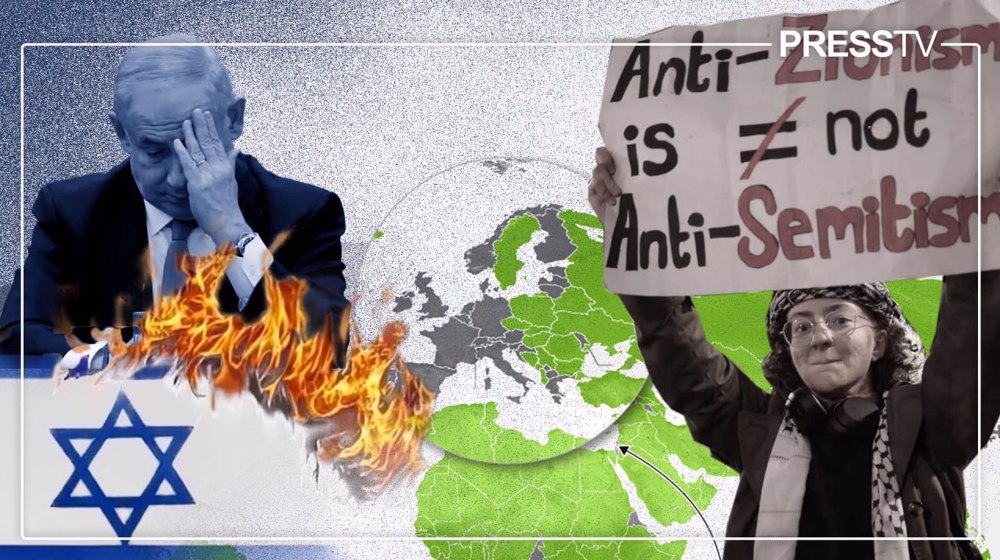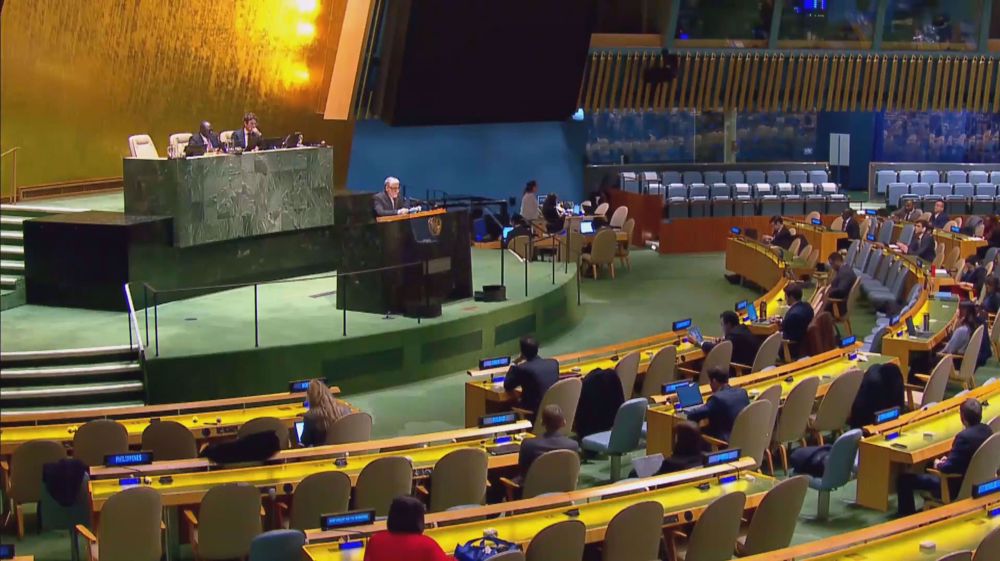Smotrich’s ‘Greater Israel’ fantasy rooted in Theodor Herzl’s Zionism
By Alireza Akbari
Israeli regime minister Bezalel Smotrich in a TV show earlier this week brazenly expounded the plan to expand the occupying entity "as far as Damascus," sparking massive backlash.
Known for his racist and fascist demagoguery, Smotrich made the remarks in a recently released documentary titled 'In Israel: Ministers of Chaos', in which he claimed that the expansionist agenda, rooted in the Zionist vision of a "Greater Israel" beyond the Jordan River, would unfold "little by little."
"Absolutely, but slowly," Israeli premier Benjamin Netanyahu's close aide and confidante said when asked about extending the regime's "borders" from the Mediterranean Sea to the Jordan River.
"Our great sages used to say that the future of Jerusalem was to extend as far as Damascus."
His comments came amid Israel’s genocidal war in Gaza and Lebanon. While the aggression against Lebanon has killed over 2,000 and displaced at least a million others, the onslaught on Gaza has so far claimed more than 42,000 lives and displaced over 1.5 million Palestinians in the enclave.
Reflecting on October 2023, when Israeli regime officials vowed to pursue “military objectives” in Gaza against the Gaza-based resistance movement Hamas—paralleling similar justifications for airstrikes on southern Lebanon under the pretext of targeting Hezbollah resistance movement headquarters in southern Beirut—it becomes evident that Israel is executing the so-called "Greater Israel" strategy.
Greater Israel is an expansionist and irredentist concept and a plan to expand the Zionist entity into the territories of West Asia and North Africa.
It is as old as the Zionist ideology and was flouted by its founder Theodor Herzl back in the 19th century, and supporters of similar ideas include numerous Israeli politicians to this day.
In the narrowest territorial sense, it includes the current Zionist entity with the occupied Palestinian and Syrian territories, specifically the occupied West Bank, Gaza and the Golan Heights, and in the broadest sense the area from the Nile to the Euphrates, or the territories of Egypt, Jordan, Lebanon, Turkey, Syria, Iraq, Kuwait and Saudi Arabia.
The founders of Zionism left room for further long-term military expansion of the apartheid regime, annexation of more foreign territory, and lobbying for recognition. Empirical examples of this policy are illegal settlements in the West Bank, East Quds (Jerusalem) and the Golan Heights.
Smotrich’s claims simply mirror what the regime is already implementing on the ground.
Although leading Israeli politicians are discreet about plans for maximalist expansion due to the unpopularity and unfeasibility of the idea, Zionists like Smotrich occasionally speak about it.
The earliest references to the so-called "Greater Israel" ideology come from the Hebrew Bible, a concept later echoed by Theodor Herzl, the leading proponent of the fascist ideology of Zionism.
In The Complete Diaries of Theodor Herzl, Vol. II, he refers to the biblical phrase, "from the Brook of Egypt to the Euphrates," as he envisions the future "borders" of the Zionist entity.
Herzl, whose diaries were compiled and edited by Raphael Patai and published in 1960, primarily focused on the so-called “homeland for Jews in Palestine" at the cost of native Palestinians.
Similarly, Rabbi Yehuda Leib Fischmann, a member of the Jewish Agency for Palestine, reinforced this narrative during his testimony to the UN Special Committee of Enquiry on July 9, 1947.
“The Promised Land extends from the River of Egypt up to the Euphrates; it includes parts of Syria and Lebanon,” he said at the time, referring to the discourse pushed by Herzl.
This ideology later evolved into a strategic framework for the Israeli regime in West Asia, as outlined in the Oded Yinon Plan. The plan, detailed in an article titled 'A Strategy for Israel' in the 1980s, was written by former Israeli official Oded Yinon and published in 1982 in the Hebrew journal Kivunim, associated with the World Zionist Organization.
The plan was translated into English in 1982 by anti-Zionist activist Israel Shahak, who noted in the foreword: “In a highly revealing article published in the World Zionist Organization periodical Kivunim, Oded Yinon advocates that Israeli strategy in the 1980s aims to redraw the map of the Middle East, fragment the Arab states, and become, in effect, a regional superpower.”
Key elements of the Oded Yinon Plan:
The central theme of the Yinon Plan was that Israel could enhance its regional dominance by fostering instability, internal conflict, and the eventual fragmentation of countries in its neighborhood.
By weakening countries like Iraq, Syria, and Egypt, it could prevent the formation of a unified Arab front, as per this plan promoted by leading Zionists.
- Fragmentation of Arab states: The core of Yinon’s argument is that Israel’s long-term security and dominance would be best secured by weakening and breaking up neighboring Arab states. He believed the borders established by colonial powers after World War I—especially under the Sykes-Picot Agreement—created unstable multi-ethnic states like Iraq, Syria, and Lebanon. Yinon saw this as an opportunity for the occupying Israeli regime to take advantage of their inherent fragility.
- Breakup of Iraq: Yinon recommended splitting Iraq into three separate entities: a Shiite state in the south, a Sunni state in the center, and a Kurdish state in the north. This fragmentation was designed to weaken Iraq’s ability to pose any unified threat to Israel.
- Lebanon’s weakening: The plan also focused on Lebanon, which was already in the throes of a civil war at the time of Yinon’s writing. He proposed the permanent fragmentation of Lebanon into smaller, ethnically homogeneous states, reducing its capacity to act cohesively. This was much before Hezbollah emerged on the scene.
- Syria’s disintegration: According to the Yinon Plan, Syria should be divided into distinct regions based on ethnic and religious lines—Alawites, Sunnis, Druze, and Kurds. A fragmented Syria would be less capable of challenging Israel’s territorial ambitions, particularly regarding the Golan Heights.
- Egypt: Yinon suggested that Egypt could also face internal instability, which would be advantageous for Israel. A weakened Egypt would limit its influence as a regional power, reducing the likelihood of it playing a leading role in Arab coalitions against Israel.
The Israeli drive for regional dominance and territorial expansion was also reflected in the Allon Plan, developed by Israeli military leader Yigal Allon in 1967.
This plan aimed to shape the Zionist entity's future "borders" through strategic retention of key territories.
Key elements of the Allon Plan:
- Security buffer zones: A central aspect of the plan was to retain strategic parts of the occupied West Bank, particularly the Jordan Valley and mountainous regions, to serve as a security buffer between the Zionist entity and Jordan.
- Return of densely populated Arab areas: The plan proposed returning parts of the occupied West Bank with a high Palestinian population to Jordanian rule or under local Palestinian control to avoid incorporating a large Arab population into the occupied Palestinian territories.
- Gaza Strip: The Allon Plan advocated for the annexation of the Gaza Strip to the Israeli regime, alongside a proposal to resettle Gaza’s large refugee population into other Arab countries or under Jordanian administration.
- Golan Heights and Sinai Peninsula: The plan implied the retention of the occupied Golan Heights, while the Sinai Peninsula, captured from Egypt, was seen more as a potential bargaining chip for future peace negotiations with Egypt.
The Israeli expansionist mindset, which was recently laid bare by Smotrich’s comments, has been met with global condemnation, with netizens decrying the notion of Israeli expansionism.
British academic and TV producer David Miller took to X, formerly Twitter, to share a map of the so-called "Greater Israel," pointing out the long-standing nature of Israel's territorial ambitions.
“Surprise! The 'Arabs' were right all along about a 'Greater Israel'. It's always been the plan,” Miller wrote.
Surprise! The 'Arabs' were right all along about a 'Greater Israel'.
— David Miller (@Tracking_Power) October 11, 2024
It's always been the plan.
In his Complete Diaries, Vol. II. p. 711, Theodore Herzl, the founder of Zionism, says that the area of
the Jewish State stretches: 'From the Brook of Egypt to the Euphrates.'… https://t.co/fpIoKuEANW pic.twitter.com/fjwqYxYVlU
A user named Rula Alqawasmi, posted the map of the so-called "Greater Israel," including the states encompassed in the ideology, alongside an image of the map as a badge on an Israeli soldier’s uniform. “That’s their plan,” she commented.
That's their plan pic.twitter.com/4TiQjfDrTA
— Rula Alqawasmi (@Alqawasmi_Rula) October 11, 2024
Kenneth Nichols O'Keefe, an American-Irish-Palestinian activist and former US Marine and Gulf War veteran, echoed similar warnings. “Correct. I warned about this over two decades ago, and most couldn’t comprehend it,” O'Keefe stated, underscoring the longstanding nature of his concern.
Correct. I warned about this over two decades ago and most couldn’t comprehend it.
— Ken O'Keefe (@KenOKeefe1TJP) October 12, 2024
A user named Deric Cadora downplayed the feasibility of the expansionist ideology, describing it as a “pipe dream.” He remarked, “That is a pipe dream, but good to know their intentions.”
That is a pipe dream, but good to know their intentions.
— Deric Cadora ☦️ 🇺🇸 (@traderderic) October 11, 2024
Nicol-André Berdellé, a German-based engineer, pointed to the open declarations by Israeli officials regarding the creation of a "Jewish state" extending beyond its current borders.
He also warned of the severe consequences of such ideologies on the region.
“Israelis are making no secret out of their plans to create a Jewish state including Jordan, Saudi-Arabia, Egypt, Iraq, Syria and Lebanon. FM Bezalel Smotrich just said it again. We are dealing with a war in the Middle East that will kill millions. US weapons have to be stopped,” he cautioned.
Israelis are making no secret out of their plans to create a Jewish state including Jordan, Saudi-Arabia, Egypt, Iraq, Syria and Lebanon. FM Bezalel Smotrich just said it again. We are dealing with a war in the Middle East that will kill millions. US weapons have to be stopped. pic.twitter.com/Uiu9Mqx53p
— Nicol-André Berdellé (@TSPC_Germany) October 11, 2024
Alireza Akbari is a Tehran-based journalist.
(The views expressed in this article do not necessarily reflect those of Press TV.)
‘Arab Nelson Mandela’ released after 40 years in France
VIDEO | Jordanians condemn Israel’s ban on UNRWA activities in occupied Palestine
VIDEO | Million-man march held in Yemen in support of Gaza, Lebanon
Iran says resolved to ‘legally’ pursue Gen. Soleimani assassination case
VIDEO | Outraged over Gaza genocide, Iraqi protesters burn Israel, US and UK flags
Far-right German party calls for UN probe into ‘Berlin’s role’ in Nord Stream blasts
Trump’s ‘Make America Great Again’ shows US debilitated, desperate: Fmr. IRGC chief
Jordan rage: Protesters blast Israel’s genocide in Gaza, carnage in Lebanon


















 This makes it easy to access the Press TV website
This makes it easy to access the Press TV website